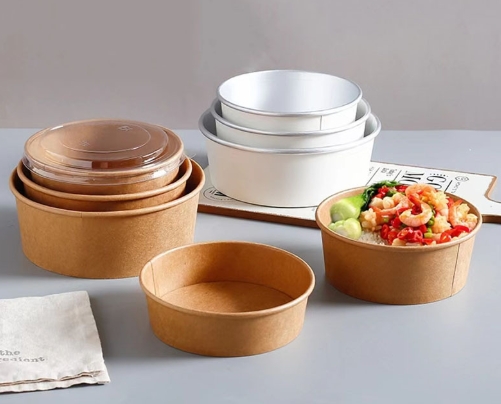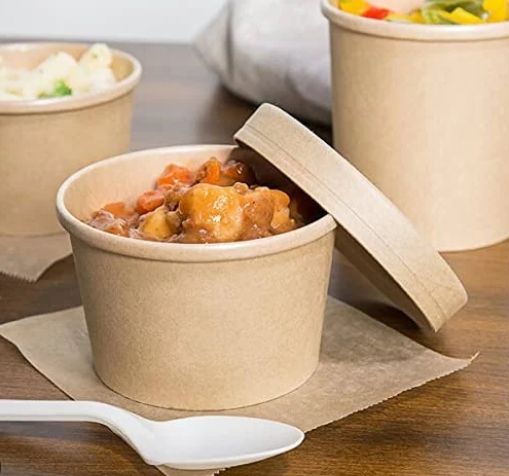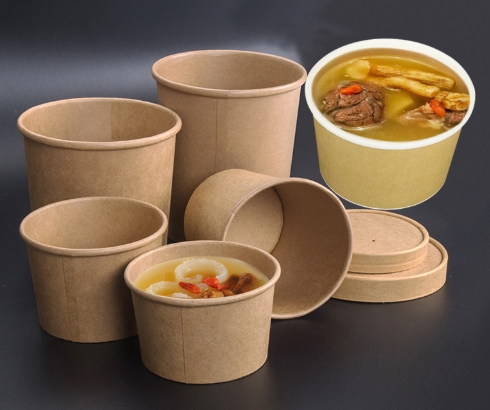
Content Menu
● Understanding Pulp Molding Technology
>> The Concept of Pulp Molding
>> From Manual to Automation
● Key Features of Automatic Pulp Molding Machines
>> 1. End-to-End Automation
>> 2. Mold Flexibility
>> 3. Precision and Consistency
>> 4. Enhanced Hygiene Design
● Transformation in Bowl and Lid Manufacturing
>> Before Automation
>> Disruption Through Automation
>> Adaptability for Modern Packaging Needs
● The Environmental Impact
>> Biodegradability and Compostability
>> Recycled and Renewable Raw Materials
>> Resource Efficiency
● Economic and Production Advantages
>> Higher Production Throughput
>> Reduced Labor Dependency
>> Fusion of Cost and Sustainability
>> Faster Customization
● Challenges and Solutions
>> High Capital Investment
>> Operator Training Requirements
>> Raw Material Fluctuations
● Industry Applications
>> Food and Beverage Sector
>> Healthcare and Institutions
>> Retail and E-Commerce
>> Corporate and Event Catering
● Future Perspectives
>> Smart Manufacturing Integration
>> Material Innovations
>> Expanding Regulatory Acceptance
● Conclusion
● FAQ
>> 1. What raw materials are used in automatic pulp molding machines?
>> 2. How does automation enhance efficiency in pulp product manufacturing?
>> 3. Can bowls and lids made from molded pulp hold hot and wet food?
>> 4. Are products from automatic pulp molding machines safe for food contact?
>> 5. What is the ROI on investing in an automatic pulp molding system?
As global consciousness shifts toward eco-friendly and sustainable living, industries are under pressure to reimagine their manufacturing strategies—especially in packaging. One significant innovation leading this transformation is the automatic pulp molding machine, a groundbreaking development that is redefining how disposable bowls and lids are made. Moving away from plastic packaging, these machines use biodegradable pulp to create practical, durable, and environmentally responsible food containers.
Automatic pulp molding machines are not only solving the environmental issues caused by plastic, but also offering industries a path toward efficient and economical mass production. This article explores the cutting-edge capabilities of these machines, their impact on bowl and lid manufacture, and why they're playing such a pivotal role in the green manufacturing revolution.

Understanding Pulp Molding Technology
The Concept of Pulp Molding
Pulp molding involves taking plant-based fibrous materials—commonly recycled paper, cardboard, or agricultural fibers—and converting them into shaped, dried, and often trimmed forms. By suspending these fibers in water, a wet "slurry" called pulp is created. This pulp is then vacuum-formed onto molds, dried, and finally cut to form sustainable products such as disposable bowls, lids, trays, and containers.
From Manual to Automation
Traditionally, this process was labor-intensive and involved multiple manual steps. Workers would manually fill molds, dry items in the open air or simple ovens, and often face limitations in scale. The switch to automatic pulp molding machines has streamlined this process to a continuous, high-speed production line. Materials are fed, formed, dried, and collected with minimal human touch, drastically enhancing efficiency and product uniformity.
Key Features of Automatic Pulp Molding Machines
1. End-to-End Automation
Automatic pulp molding machines are designed to run seamlessly from start to finish. This includes:
- Automated pulp slurry mixing
- Mold feeding and vacuum forming
- Integrated drying systems (hot press, microwave, or infrared)
- Automatic trimming and stacking
Each phase is controlled by programmable logic controllers (PLCs), enabling high accuracy and consistent output.
2. Mold Flexibility
One major advantage is the ability to switch product molds rapidly. Whether producing soup bowls, take-out box lids, or large container covers, technicians can switch molds on the same machine within short downtime, thus meeting various design specifications and customer demands without the need for entirely separate production lines.
3. Precision and Consistency
Because the entire operation is managed by computer systems, the output boasts high dimensional precision and low defect rates. Each product maintains uniform thickness, weight, and texture. The system effortlessly adjusts water content, drying temperature, and pressure across batches for ideal settings.
4. Enhanced Hygiene Design
Automatic systems operate in a closed-loop environment, limiting exposure to contaminants. Stainless steel components, self-cleaning systems, and dust filtration ensure the finished products meet hygiene standards required for food-grade packaging.
Transformation in Bowl and Lid Manufacturing
Before Automation
In the early stages, manufacturing pulp-based products required immense manual labor. Workers did everything—from mixing pulp, pouring it into molds, removing the formed items, and drying them manually. This led to inconsistent product shapes, warping, long production cycles, and significant limitations in scale.
Disruption Through Automation
The introduction of fully automatic pulp molding equipment marked a turning point. These machines operate continuously and can produce thousands of units in a single shift. Human error has largely been eliminated, and labor costs are significantly reduced. Also, product quality now adheres to national and international standards, opening new doors for export and large-scale partnerships.
Adaptability for Modern Packaging Needs
Changing consumer demands, including the need for microwave-safe, compostable, and liquid-resistant packaging, can now be met through different mold applications and finishing processes on automated lines. A single machine can be configured to manufacture both deep soup bowls and flat coffee cup lids with just a mold change.
The Environmental Impact
Biodegradability and Compostability
Unlike plastic, molded pulp breaks down naturally in both commercial composters and home compost piles. Within weeks of disposal, these products return to the soil, enriching it and reducing environmental burden.
Recycled and Renewable Raw Materials
Most automatic molding machines use raw materials sourced from recycled newspapers, office paper, sugarcane bagasse, or wheat straw. This shifts the supply chain away from petroleum-based sources and supports circular economy goals.
Resource Efficiency
The machines themselves are optimized for low utility usage. Closed-loop water systems reuse water from forming and trimming stages, while drying chambers are insulated to conserve energy. Many modern systems use clean heat sources, further decreasing environmental impact.
Economic and Production Advantages
Higher Production Throughput
With the ability to run 24/7 in factory settings, automated pulp molding lines multiply output. Operators can produce significantly more bowls and lids than manual systems over the same period, making them highly suitable for large chains and export orders.
Reduced Labor Dependency
Automation reduces reliance on skilled labor. One technician can monitor several machines simultaneously, lowering payroll costs, improving safety, and decreasing margin for error.
Fusion of Cost and Sustainability
While initial machine investments may be high, long-term savings on labor, raw materials, and waste management quickly offset the expense. The added advantage of compliance with evolving environmental regulations means staying ahead in competitive markets.
Faster Customization
Customer demands vary quickly. A large restaurant chain may need branded soup lids this month and catering trays the next. Automatic systems allow for this flexibility, adapting quickly without disrupting entire production workflows.
Challenges and Solutions
High Capital Investment
Small businesses may find initial setup costs a hurdle. Fortunately, leasing options, government grants, and regional subsidies for green manufacturing are becoming increasingly available to support transformation.
Operator Training Requirements
These machines need knowledgeable operators for maximum efficiency. However, most equipment vendors now offer hands-on training, virtual diagnostics, and online support rounds, ensuring even small teams can manage large setups.
Raw Material Fluctuations
Demand for recyclable and agricultural fibers has increased, sometimes affecting supply. Manufacturers adapt by using blended pulp recipes suited to local availability and by signing forward contracts with suppliers.

Industry Applications
Food and Beverage Sector
Restaurants, cafes, and catering services are among the largest consumers of molded pulp bowls and lids. Products are safe, durable, grease-resistant, and can be printed or embossed for branding.
Healthcare and Institutions
Hospitals and schools require food-safe, disposable containers for everyday usage. Pulp molded options offer a non-toxic, eco-conscious alternative that complies with strict sanitation protocols.
Retail and E-Commerce
Small and specialty food brands are turning to molded pulp to package dry goods, herbs, and condiments. Lightweight and compostable, these containers support product sustainability stories and reduce shipping weights.
Corporate and Event Catering
For large-scale events, eco-friendly packaging is now a selling point. Event organizers prioritize compostable materials to minimize environmental impact and align with green certification goals.
Future Perspectives
Smart Manufacturing Integration
Future systems will leverage machine learning and AI to optimize production recipes, predict maintenance needs, and manage energy consumption in real time. Sensors can detect inconsistencies and automatically recalibrate molds or pulp mixtures for optimal output.
Material Innovations
Ongoing research is yielding new pulp blends that are stronger, more heat-resistant, or feature natural anti-microbial properties. These innovations open doors for applications in frozen food, ready meals, and high-end packaging.
Expanding Regulatory Acceptance
As more countries ban expanded polystyrene and mandate the use of compostable packaging, automatic pulp molding will likely become the benchmark in food service and packaging industries.
Conclusion
Automatic pulp molding machines are reshaping the landscape of disposable packaging, offering a highly effective solution for producing eco-friendly bowls and lids at scale. Combining precision, efficiency, and sustainability, these machines embody the core values of next-generation manufacturing. Businesses that invest in this technology not only future-proof their supply chains but also contribute meaningfully toward a cleaner environment.
By embracing automation, companies position themselves at the forefront of innovation, ready to meet both regulatory demands and consumer expectations for sustainable packaging.

FAQ
1. What raw materials are used in automatic pulp molding machines?
These machines typically use recycled paper, cardboard, and agricultural waste such as bagasse and wheat straw, making production highly sustainable and reducing dependence on virgin resources.
2. How does automation enhance efficiency in pulp product manufacturing?
Automation integrates all stages of molding—including pulping, forming, drying, and trimming—into one continuous system. This reduces downtime, improves consistency, and significantly increases production capacity.
3. Can bowls and lids made from molded pulp hold hot and wet food?
Yes. Molded pulp containers are often designed with special coatings or treated surfaces that make them water-resistant, oil-proof, and safe for hot food use.
4. Are products from automatic pulp molding machines safe for food contact?
Absolutely. These machines are engineered with food-grade materials and operate under hygienic conditions. Many systems are compliant with international food contact safety standards.
5. What is the ROI on investing in an automatic pulp molding system?
Businesses often see rapid returns through labor savings, reduced waste, large-scale output, and emerging demand for sustainable packaging. Government incentives also help offset initial investment costs.

















